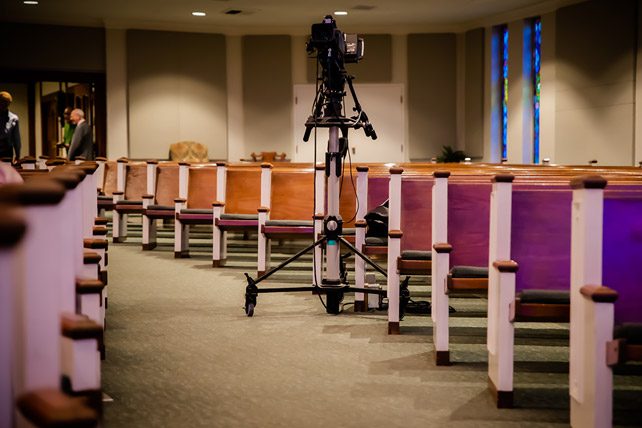Nearly three years since the onset of COVID-19 left pews empty, churches across the globe have largely returned to normal operations, while also finding new avenues to reach their post-pandemic-minded congregations.
COVID-19 had a profound impact on church communities and ministries of all sizes, as seen through record-low giving, increased staff attrition, challenges recruiting and engaging volunteers and increased operating costs due to inflation. Suddenly, churches had to figure out how to stream services online, create genuine connections with members virtually and develop an online giving platform.
At the beginning of it all, the Church at large did its best to harness the power of modern technology, but in many cases, it also experienced the pain of disconnected systems and inefficient digital platforms in place up to that point. This revealed a glaring need for better “all-in-one” church software solutions to support three post-pandemic realities for today’s church:
The Future of Ministry Is Not 100% Online or 100% On-Campus.
During the peak of the pandemic, frequent changes to health and safety guidelines meant pastors had to adapt quickly in many areas. Church leaders who were willing to explore new ways of “doing church” were able to bridge the gap between the old normal and the new one fairly well.
Prior to COVID, 41% of U.S. Protestant churches provided no option to view the service or sermon online, according to a Lifeway Research study conducted in late 2019. Only around a third offered some type of live stream, either of the entire service (22%) or the sermon only (10%).
Those numbers changed dramatically and quickly as the pandemic spread across the U.S. in the spring of 2020, according to additional Lifeway Research studies. By April of that year, 97% of Protestant churches offered some type of digital worship service option, including 45% who say they didn’t previously live stream services, but began doing so because of the pandemic.
By the spring and summer of 2022, with little choice in the matter, more churches began to adopt streaming at a record pace. This created a new opportunity to reach people in other cities, states and even countries. Today, churches are no longer made up of neighbors only; they can minister beyond the four walls of a building, in many cases reaching people across the country or even around the world. Because of the adoption of online tools for discipleship by both the church and those they are trying to reach, the Church’s call to take the Gospel to the, “ends of the earth” has never been more possible.
Passing the Plate Is a Thing of the Past
Over the last few years, churches have experienced a seismic shift in giving behavior that is likely to be permanent. Thanks to health measures put in place at restaurants since 2020, everyone knows how to use their phone to scan a QR code and quickly access the online giving method of their choice, not to mention other valuable church information.
Many churches now offer multiple giving options including online, text-to-give, virtual terminal, and mobile apps through which users can securely give via credit card, debit card or ACH. Some churches will even accept PayPal or Venmo transactions.
Given our society is more mobile than ever, these options have gone a long way in helping churches, ministries and other faith-based organizations to streamline contributions. Organizations that underestimate the value of providing an online giving platform risk losing the engagement of today’s cashless, Apple Pay culture.
The Front Door of the Church Is Now Its Online Presence
No longer is an uplifting message on a marquee sign enough to get someone to visit a church. People audition churches via the internet. If a website is nonexistent, outdated or confusing, they’re unlikely to give it a try.

